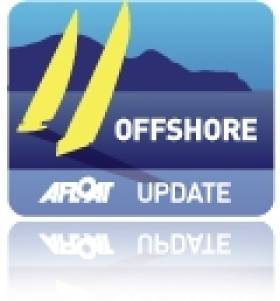Displaying items by tag: Pacific Ocean
Man Survives 14 Hours In Pacific Clinging to Fishing Buoy
A man survived 14 hours in the Pacific by clinging to a fishing buoy after he fell overboard from a cargo ship.
Marine Industry News rounds up the stories on Vidam Perevertilov, the chief engineer on board the Silver Supporter who entered the water between New Zealand and the remote Pitcarin Islands on Tuesday 16 February.
As his ship sailed away unaware of his predicament, Perevertilov swam to a “black dot” on the horizon which turned out to be an abandoned fishing buoy.
Six hours later the alarm was raised and the ship used its logs to pinpoint Perevertilov’s location in the open sea, where he was adrift without a lifejacket.
Marine Industry News has more on the story HERE.
Supersonic Submarine Could Send People Across Pacific In 100 Minutes
#Submarine - Could a supersonic submarine speed through the Pacific Ocean from San Francisco to Shanghai in less than two hours?
The Chinese engineers behind some remarkable new sub-sea technology seem to think so, as the South China Morning Post reports.
Their 'supercaptivating vehicle' design uses gas jets to envelope a vessel inside an air bubble that severely reduces the friction or drag experiences by objects moving through water.
In practice, the technology was developed by the Soviet military to send a torpedo rocketing through the water at an incredible 370km/h.
In theory, the same principles could be adapted to fit a much larger vessel such as a passenger submarine and send it zooming through the depths at a barely fathomable 5,800km/h – the speed of sound under water – and cut a transpacific trip to just 100 minutes.
The South China Morning Post has much more on the story HERE.
Velux 5 Oceans: Windy Start to Ocean Sprint 3
The Velux 5 Oceans website has posted a video preview ahead of the third ocean sprint stage in the marathon round-the-world yacht race.
The third stage, which kicks off tomorrow, will take the four competing yachts across the Pacific Ocean from Wellington, New Zealand to Punta de Este in Uruguay.
Sail World reports that northerly gales are expected to buffet the boats from the off as they set out on the incredible 6,000-mile route, which will take them to Nemo Point - the most remote spot in the world - and the notorious challenge of Cape Horn.
American Brad Van Liew, skipper of Le Pingouin, is currently in the lead having won the previous two ocean sprints in the 30,000-mile race.


























































